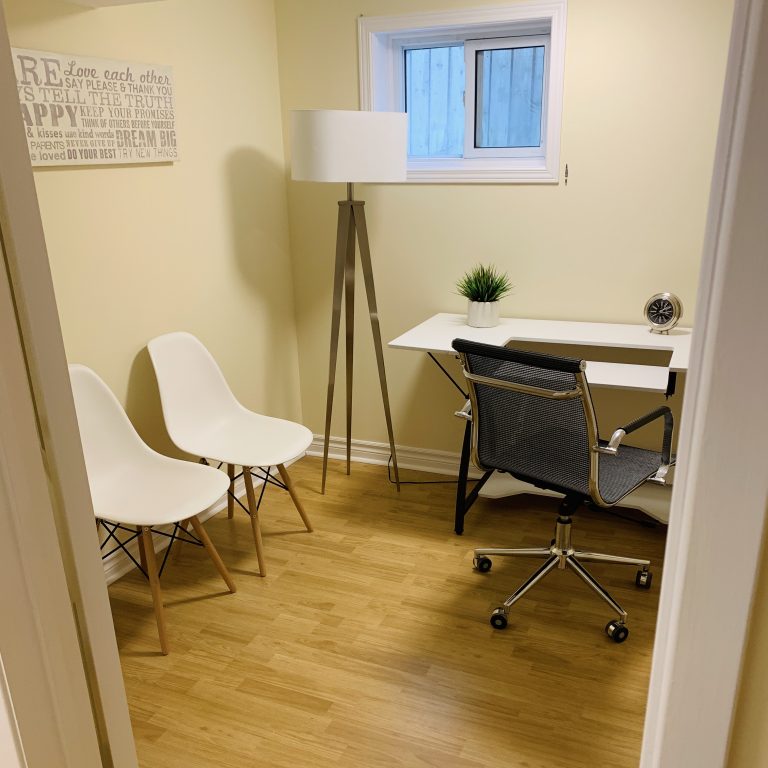
In mid-2017, I started having weird episodes when my then-boyfriend would go on dates with one of his other partners. I’m using the phrase “weird episodes” here because I wasn’t sure what to call them at the time – they felt more panicky and distressing than mere jealousy, but did not manifest like actual panic attacks, as far as I could tell. During those episodes, I felt like I was dying, and like I was an ugly failure, and like I had just been informed by the love of my life that they didn’t care about me and were leaving. Those emotions felt entirely real and immediate to me, and made me utterly unable to function. They would often continue for hours or days.
I was very confused, and frankly, so was my partner. I had been polyamorous before, and this had never been an issue. Sure, I’d felt twinges of jealousy or irritation now and again when my partners would spend time with their other sweethearts, but those had always felt manageable, momentary, and easily dismissed. These new episodes were entirely different in character, and were much more debilitating to my relationship and my everyday functioning.
What I later learned, through tons of therapy, reading, journaling, chatting with polyam friends, and reflecting on my experiences, is that I am a trauma survivor and that these episodes were a trauma response. Childhood experiences of emotional abuse had amped up my nervous system and had made me hypersensitive to the threat of being unloved, unwanted, and not good enough. These feelings came up more acutely in that particular relationship because we were in a DD/lg dynamic, which brought my deepest desires to life but also brought the most vulnerable and helpless versions of me to the surface psychologically.
So when that boyfriend/daddy dom started dating someone else, without checking with me first and without taking the time to make sure both Adult Me and Little Girl Me felt okay with that decision and felt safe in our relationship, of course I started getting triggered all the time. I had deep-seated childhood trauma and was being re-traumatized repeatedly by the embodied sense that my “daddy” liked someone else better than me – a situation which wasn’t exactly helped by him constantly texting with his other partner while we were together, conveying more enthusiasm about that relationship than about ours, and telling me I was overreacting and harming him by being triggered.
Needless to say, that relationship didn’t last. But what it taught me was invaluable. The intensity of my reactions in that relationship eventually led me to seek out trauma therapy and start finally unpacking my issues. So, even though that boyfriend treated me badly, in a way I have to thank him for showing me exactly what parts of myself I needed to work on in order to someday become my truest, highest, most healed self.
Learning about the ways that trauma impacts polyamory has been completely transformative for me, because it has given me the tools to understand my past experiences and a road map toward happier ones. When I first entered the non-monogamy world around 2012, there was an almost libertarian-esque fervor about “taking responsibility for your own feelings.” The general prevailing attitude in the community, so far as I could tell, was that if you felt jealous, that was your issue to deal with, and your issue alone. There was very little nuance in the conversation and very little room for the idea that people’s emotional responses are not always the result of a toxic monogamy mindset and are not always fully within their control.
This can cause traumatized polyamorists to feel that they’re “broken” or “bad at polyamory” for having these responses. In many cases, they think that because they’ve been explicitly told that by judgmental partners who didn’t understand what was going on. Triggering a shame spiral in this way helps no one, and yet it was the customary approach most polyam people seemed to take when dating a traumatized person at that time.
So I’ve been delighted to see more discourse about trauma and polyamory over the past few years, and more resources popping up to explain these concepts to folks and help them have happier, healthier relationships regardless of their trauma history. I’ve gathered some of those resources below for you to peruse if you need ’em, or if you think my tale of woe sounds like something your partner or friend has gone through, or if you’re just curious. Whether you want to be non-monogamous yourself and have struggled with it due to trauma, or you just want to work through trauma that affects your relationship(s) regardless of monogamy status, I hope you find these resources as helpful as I have.
Workshops
• Bar none, the most helpful resource on this topic for me personally has been Clementine Morrigan’s “Trauma-Informed Polyamory” workshop. While Clementine does teach it in-person sometimes, it’s also available online as a 2.5-hour video (with optional captioning) that you can purchase, download, and watch. What’s really remarkable about this class is that it brings together a variety of modalities I think are crucial for understanding and overcoming trauma responses in polyamory. These include nervous system work (i.e. understanding how and why your nervous system gets triggered and how to get it back into a place of safety) and attachment theory (i.e. the ways that our relationships with our caregivers in childhood can affect the way we approach relationships for the rest of our lives). If you choose to only explore one resource on this list, I think it should be this one, unless something else I recommend here sounds like it would resonate more for you.
• While not trauma-focused, Reid Mihalko’s “Battling the 8-Armed Octopus of Jealousy” workshop was super helpful for me in learning more about jealousy triggers. There are a lot of different reasons why people experience jealousy, and it can be useful to understand your own triggers in this area so you can learn to work around them or create relational structures that prevent them from occurring as often. For example, I learned in this workshop that one of my biggest jealousy triggers is not feeling “special” to my partner, which is one reason why we have specific honorifics, kinks, and sex acts that we reserve only for each other and don’t do with other partners.
Books & Zines
• The book Polysecure: Attachment, Trauma and Consensual Non-Monogamy by Jessica Fern has gotten a lot of attention in polyamorous communities over the past year, and for good reason. It’s a must-have guide to navigating polyamory when you or a partner is attachment-injured, i.e. experienced some kind of trauma related to their caregivers or other attachment figures at some point which continued to affect the way they feel and behave in relationships. If you’ve routinely struggled with anxiety and/or avoidant behaviors in your relationships, you might be attachment-injured and this book might help you. The thing I love most about it is that it emphasizes finding relational security through the quality of the connection, rather than through extraneous things that provide the illusion of relational security, like monogamy or strict rules. You should read this if you’re an attachment-injured person who wants to be polyamorous, or if you have a partner or potential partner who fits that description; it’ll give you a lot of strategies for calming attachment-related inner turmoil and finding a feeling of safety in your relationship(s).
• In addition to their polyamory workshop (above), Clementine Morrigan also wrote a zine called Love Without Emergency: I Want This But I Feel Like I’m Going to Die about their personal experiences with these issues. (That link is to the physical version of the zine; click here if you’d rather buy a PDF copy.) It’s less of an instructional resource and more of a calming, validating one. Sometimes I leaf through my copy when my partner is on a date, to remind myself that 1) other people experience what I’m feeling and so I’m not alone, 2) my trauma does not make me broken, and 3) there are ways out of those terrible feelings.
• The Body Keeps the Score by Bessel Van Der Kolk is widely regarded as one of the best books on trauma, such that my partner and I frequently make jokes about the title when we need a moment of levity during a trauma episode (e.g. “damn, my body’s really keeping the score today, huh?!”). I haven’t had the emotional strength to read it yet, honestly, but I know that it’s largely about the ways that trauma manifests physically in the body, which is useful stuff to understand when navigating any kind of triggering situation, including those that can come up in polyamory.
• One of my all-time fave non-monogamy books in general is Building Open Relationships by Dr. Liz Powell. This one isn’t primarily trauma-focused but it does contain a lot of practical advice for navigating emotionally difficult situations that come up in polyamory, like what to do if you get anxious while your partner is out on a date or what level of detail you want to hear when your partner tells you about their dates.
• I haven’t yet had a chance to read Open Deeply: A Guide to Building Conscious, Compassionate Open Relationships by Kate Loree, but the author is trauma-savvy and it looks like it’s gonna be great.
Therapeutic Modalities
I’ve written before about how I used the filtering tools on PsychologyToday.com to find my therapist, by searching for practitioners who were LGBTQ-informed, kink-informed, and polyamory-informed, and who specialized in trauma. You can use that same method to find a therapist, or you can just voice a preference for particular modalities when searching for a therapist in whatever other ways are available to you. I’m no expert, but here are some modalities and strategies I’ve found helpful in healing from these issues:
• Internal Family Systems is a therapeutic model which emphasizes the existence of different “parts” of our personalities, which can be integrated through therapy. I never really used to believe in this stuff, but as I’ve been healing my trauma with the help of my therapist, I’ve noticed that my “inner child” is very wounded and needs a lot of love and compassion, which I had long been denying her by dismissing those sad, unloved feelings as stupid and irrational. Doing IFS work with my therapist is helping me reconnect with that inner child so I can “re-parent” her and help her feel safe, even when she experiences abandonment anxiety or insecurity because of my partner dating other people. If you’re interested in IFS but can’t afford/access therapy or just want to learn more, Dr. Tori Olds has an incredible series of videos about the basic principles of IFS; her work has helped me understand how this modality functions, not only emotionally but neurologically as well.
• “Somatic therapy” is a pretty broad term, as there are many therapeutic modalities that focus on the somatic, i.e. what our bodies are feeling and how that connects to our minds. However, I mention it here because it was something I specifically sought out when I wanted to heal from trauma, having noticed that modalities based on words and emotions (such as cognitive-behavioral therapy) weren’t easing my trauma responses at all. This, I learned, is because trauma is stored in parts of the mind that aren’t always consciously accessible to us, and because many people find that trauma manifests in their bodies, not just their minds. Doing somatic exercises with my therapist has been way more helpful for my trauma than CBT. Some examples of these exercises are locating the physical locus of anxiety within myself and having a “conversation” with it, or noticing while triggered that the bigness of my body means I’m an adult now and am not a powerless child anymore.
• Compassion and mindfulness. These are components of many therapeutic modalities, but I think they’re important enough to be mentioned specifically here. A lot of the work I’ve done on mindfulness, whether with the guidance of an expert or just in my own research and exploration, has been about accepting everything I’m feeling and experiencing at the present moment, including the things about myself that I normally dislike. Accepting yourself the way you are right now is a type of self-compassion, and self-compassion is vital for healing the anxieties and insecurities that can make polyamory feel impossible.
Other Resources
• I think reading polyamory blogs and forums can be super helpful when you’re feeling shitty about yourself for struggling with polyamory, because a lot of other people struggle with it too and have written about their struggles online. Kevin Patterson’s excellent blog Poly Role Models and the ever-insightful Poly.Land are great places to start.
• Sex educator and trauma expert Jimanekia Eborn hosts a podcast called Trauma Queen which is super validating to listen to as a trauma survivor. It’s not always focused on polyamory or relationships, but I think there’s a lot to learn from it in terms of trauma more generally.
• Jessica Fern, the author of the aforementioned book Polysecure, guested on my podcast and we had an interesting conversation about the monogamy mindset, nervous system regulation, healing from trauma, and more.
I’ll leave you with a metaphor that my therapist used in one of our sessions recently. Imagine you have a friend who went through a traumatic house fire as a kid. No one died or was seriously injured, but it was extremely scary and they’ve found fire very triggering ever since. But imagine that because of their ethics and values, they decided they wanted to become a firefighter. As they started training for the job, and then started fighting actual fires, what would you say to them when they kept getting triggered every day at work? What would be your advice for this person? Would you tell them to quit, or would you tell them to continue?
When my therapist asked me this, the answer seemed immediately obvious to me. “I’d tell them that the right decision would depend on whether or not they felt willing and able to put in the work to overcome that trauma,” I said. “I’d tell them they would have to think carefully about whether their values are more important than avoiding their trauma triggers. There’s no wrong answer, but they should think about it.”
My therapist said, “Exactly. And it’s the same with you and polyamory. Polyamory is very triggering for you. But you also know that you want to be polyamorous, because of your values and priorities. So the question becomes: Do you want it enough to put in the work of healing from your trauma so you can achieve your goal of being happily, healthily polyamorous?”
For the time being, I have decided that I do. So I will continue to revisit these resources, go to therapy, and work on myself. I will continue, at least for now, to fight those fires. I will continue to do the hard work I signed up for. Even when it hurts. Even when it feels impossible. Because I’m tired of being so damn scared all the time. I want to be brave and strong and healed, and I know that I can be. I just need help to get there – and, as this list has shown, there’s plenty of help to be found.
Do you have any resources to recommend on the subject of trauma’s interactions with polyamory? Feel free to share ’em in the comments, or let me know if you’ve enjoyed the ones I’ve recommended here. ❤️



